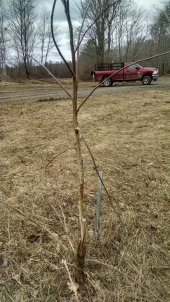"Permaculture teaches that a SPECIFIC SUBSET OF PLANTS are ESPECIALLY WELL ADAPTED, based on their long taproots or other features, to accumulating nutrients faster / in higher quantities / from different sources than other plants." (from permie.com) So very often people make the assumption the dynamic accumulators work because of a deep taproot. Often they state deep taproots are considered the only way dynamic accumulators work. This assumption is false. Take stinging nettle as an example. It is famous by permies as a superior dynamic accumulator. Stinging Nettle, Urtica dioica (shown on the left) is said to accumulate , K, Ca, S, Fe, Na It is famous for iron. This can be substantiated by leaf samples. It is documented as a iron-nutritious iron-rich food. But it does NOT have a taproot. It's roots do grow 4-5 feet wide (as shown in the drawing on the right) but have only shallow roots. The roots are more like shallow rhizomes. I think they may accumulate more of some nutrients, but it is from a genetic "programing" that distinguishes dynamic accumulators. There are other examples of assumed dynamic accumulators that don't have taproots.





